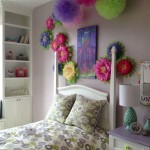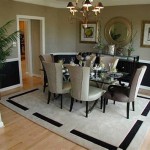Early American Living Room Decor
Early American living room decor evokes a sense of history, simplicity, and warmth. It draws inspiration from various colonial periods and styles, including Colonial, Federal, and Shaker, spanning roughly from the 17th to the early 19th centuries. This style celebrates natural materials, handcrafted items, and a focus on functionality, reflecting the lifestyle of early American settlers.
Furniture plays a crucial role in establishing an Early American aesthetic. Pieces are typically constructed from solid wood, often pine, maple, or cherry. Common furniture choices include Windsor chairs, characterized by their spindle backs and turned legs, and ladder-back chairs with their horizontal slats. Gateleg tables, offering versatile surface area, and sturdy chests of drawers, providing essential storage, are also characteristic of the style. Sofas and wingback chairs, often upholstered in linen or wool, provide comfortable seating options. These pieces often feature simple lines and minimal ornamentation, highlighting the beauty of the natural wood.
Color palettes in Early American living rooms lean towards earthy and muted tones. Walls are often painted in shades of cream, beige, or soft greens and blues. These colors create a serene and inviting atmosphere while serving as a neutral backdrop for the furnishings and decorative elements. Darker wood stains and painted finishes, like black or deep red, are also common, particularly for furniture pieces, adding depth and contrast to the room.
Textiles contribute significantly to the cozy and comfortable feel of Early American decor. Natural fibers such as wool, linen, and cotton are favored for upholstery, curtains, and rugs. Woven fabrics, including homespun and checkered patterns, are frequently incorporated. Quilts, often handmade and featuring intricate patchwork designs, serve as both functional bed coverings and decorative wall hangings. Hooked rugs, another traditional craft, add warmth and texture to the floor. These textiles not only provide comfort but also add visual interest and a sense of history to the room.
Lighting in Early American living rooms is typically soft and warm, relying on natural light during the day and candlelight or oil lamps in the evening. Reproductions of these historical lighting fixtures can be incorporated into modern Early American decor to enhance the ambiance. Simple chandeliers, often made of iron or wood, and wall sconces provide additional illumination. The warm glow of these light sources contributes to the overall welcoming atmosphere.
Decorative accessories play a significant role in completing the Early American look. Simple, functional items are preferred over purely decorative pieces. Pewter candlesticks, wrought iron hardware, and ceramic pottery are common additions. Antique or reproduction clocks, often featuring wooden cases and brass details, add a touch of history. Mirrors, often framed in simple wood or metal, can be used to enhance natural light and create a sense of spaciousness.
Fireplaces are a focal point in many Early American living rooms, serving as both a source of heat and a gathering place. Stone or brick fireplaces, often with a simple mantelpiece, are typical of the style. Decorative elements such as fireplace tools, andirons, and bellows add to the authentic feel. The fireplace contributes warmth and visual appeal, further enhancing the cozy atmosphere.
Flooring in Early American homes traditionally consisted of wide plank wood floors. These floors, often made of pine or oak, are typically left unfinished or stained in a natural color. Braided rugs or hooked rugs are often used to add warmth and define specific areas within the room. The natural texture and color of the wood floors contribute to the rustic and inviting feel of the space.
Window treatments in Early American decor are typically simple and functional. Wooden shutters, offering privacy and light control, are a common feature. Curtains made from natural fabrics, such as linen or cotton, are often used to soften the look of the windows and add a touch of color. Simple valances or tiebacks can be used to enhance the curtains and add a decorative element.
Achieving an Early American aesthetic involves careful consideration of the furniture, color palettes, textiles, lighting, and decorative accessories. By incorporating these elements thoughtfully, one can create a living room that evokes the spirit of early America while remaining functional and comfortable for modern living. The style’s emphasis on natural materials, craftsmanship, and simplicity creates a timeless appeal that resonates with many.

A Midcentury Cottage Imparts Early American Primitive Style Journal

Early American Design Why Was It Popular In The Mid 20th Century Retro Renovation

American Colonial Design Ideas S Remodel And Decor House Interior Early Decorating Home

Early American Style Explore Creative Design Ideas Tips And Inspirations For This Classic Architectural

Bicentennial Chic Heck To The Yeah Retro Renovation Early American Furniture Home Decor Decorating

American Farmhouse Style Decorating The Honeycomb Home

So Your Style Is Early American

Fifties Fabulous A Marvelous Midcentury Ranch In Lenox Massachusetts New England

Colonial House And Early American Decor

Early American Country Homes A Return To Simpler Living Colonial Home Decor Dining Room Interior







